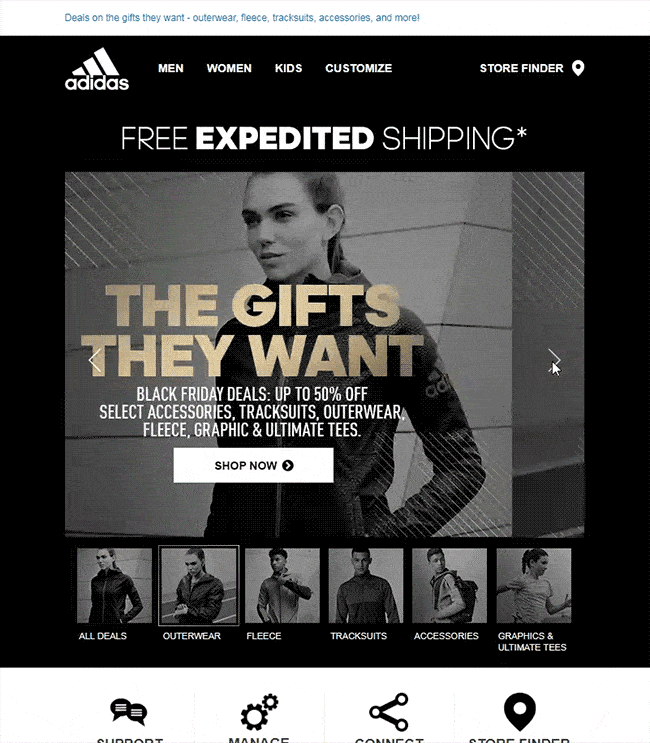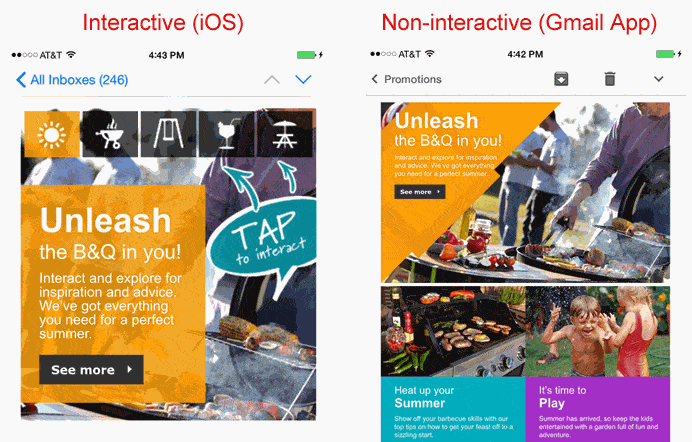From the early days of static banner ads to recent innovations like playables and kinetic emails, creative design in digital marketing has come a long way. Advertisers have had to adapt their strategies to align with fast-changing trends. From the rise of email marketing and search engine optimization to consumers’ growing ability to interact with brands via personalization, automation, and of course, social media.
What does this tell us? Essentially the crisis has accelerating the inevitable rise of automation over manual ad serving we all knew was on the horizon. Which directly relates to the commoditization of programmatic as it is holding steady in the market.
Early Innovations
Clickable Campaigns
All it takes is a quick look back at some early online marketing to see how much creative design strategy has changed over the past 25 years. Take, for example, the banner ad. While people may go out of their way to avoid clicking on them today, this was not the case back in the mid 1990s.
To the contrary, when AT&T ran one of the first clickable campaigns on HotWired.com, the then-official website for Wired magazine, a groundbreaking creative design strategy was born.
While the visuals were simple (and meant to mimic what readers were used to at the time—ads on print magazine pages), the strategy was novel: entice online readers to take an immediate action with an attention-grabbing, curiosity-piquing question (in a rainbow font, no less).
The campaign was a breakthrough success. Proving that online readers were willing to leave a piece of editorial content to check out an ad—if it was eye-catching and engaging enough.
The creative design concept took off, and web design became more sophisticated. As a result, the stationary graphics (and questionable font choices) of early banner ads evolved into visually compelling images and attention-grabbing animation.
Customized & Shareable Content
In the mid-to-late aughts, as social media platforms started to emerge and consumers became more comfortable making purchases online. Brands began developing creative design strategies that used personalized visual content to attract consumers. A great example of this is OfficeMax’s ElfYourself.com campaign, which was unleashed online for the 2006 holiday season.
The website allowed people to create quirky holiday e-greetings by uploading cropped photos of their faces (or the faces of their friends) to be superimposed over pictures (and later, videos) of dancing elves. In addition to leveraging and renewing interest in the e-card platform, which had become fairly uninspired, the cards could be shared easily on social platforms. As a new trendy concept at the time, this helped to build brand awareness and drive engagement even further.

In short, this innovative creative design campaign was a slam dunk for OfficeMax. Driving consumers to the site at an impressive 200 hits per second soon after launch. This level of engagement was especially impressive for an office supply store during the holidays. Unheard of for a retail outlet shoppers rarely turn to when looking for Christmas gifts.
Today's Trends
The Power of Playables
According to the Pew Research Center, 35% of all Americans owned a smartphone in 2011. By 2018, that number had skyrocketed to 81%. By 2019 study found that the average American spends more than five hours a day on their smartphone. A number that has likely increased thanks to the stay-at-home restrictions imposed as a result of Covid-19.
With so many consumers now relying on their smartphones for everything from banking and dating to grocery shopping and booking hair appointments, mobile apps have become a prime marketing channel for innovative creatives.
In-app marketing strategies such as playable ads combine interactive visuals with basic mobile gestures (swipe, flip, tap, etc.). All in an effort to draw consumers in with the promise of a fun, gamified experience. Some playables also incorporate content-rich creative design elements such as video trailers, sweepstakes, and coupons.
Thanks to HTML5, downloading is not required to interact with a playable ad. Meaning the engagement is instant and requires no commitment. Plus, the process as a whole is fluid and seamless. After engaging with a playable ad, consumers can take action by making a purchase or downloading a coupon. Then return to their original media with ease.
Connecting with Kinetic Emails

Kinetic emails are similar to playables in that they use creative design elements to engage readers in fun and immersive ad experiences. Essentially, they’re like a website embedded in an email. Allowing readers to interact with a brand’s content without having to click away and commit to visiting the website themselves.
Studies have shown that adding interactive content to emails increases click-to-open rates by 73%. So it’s no wonder kinetic email marketing has taken off. Engaging, contemporary design elements such as sliders, GIFs, and collapsible menus get—and keep—a reader’s attention. Which is essential in an age when consumers are forced to sift through inboxes stuffed with new emails each and every day.
The Future is Interactive
Creative Design in the Age of Coronavirus
There’s no denying the fact that the COVID-19 crisis is rapidly transforming the digital marketing landscape. When it comes to creative design specifically, the changing habits of consumers have made one thing clear. In order to effectively capture audiences, brands must continue to push the boundaries of interactivity with immersive ad experiences that are more dynamic and engaging than ever before.
Because people are not interested in spending money on non-essential items right now. If and when they do decide to treat themselves, they’re sticking with the 5 to 10 brands they already know and love.
Brands not in that top-of-mind spot have their work cut out for them. Building a long-term funnel to these consumers will require highly optimized content and creative design that promotes engagement in the places they spend the majority of their time.
Take TreSensa’s in-app playable ads, for example. In addition to capturing attention with an interactive, gamified experience, their game schematics capture pragmatic consumer information while the user is engaged in play. This valuable data—which brands would not be able to obtain through simple display—can then be used to create additional ad content. Content that’s even more dynamic and engaging because it’s specifically tailored to the user’s preferences.

Why Fallbacks Are Now a Necessity
Lastly, if the future of creative design is interactive, each and every interactive element must have a fallback in order for it to be successful. Because as important as it is to push the boundaries of customer engagement and take advantage of all that new and emerging technology has to offer, it can backfire if it’s not done responsibly.
You can’t entice audiences with an exciting and interactive ad experience that only some users will be able to enjoy. It is important to take platform limitations and security firewalls into account. Accounting for possible issues during the design process will all but eliminate the probability of users being frustrated with your brand due to rendering issues.

Whatever channel you’re using, whatever type of interactive innovation you’re employing, fallbacks must always be developed in creative design. With the main goal of accommodating users that lack support. As innovative and visually engaging as a kinetic email or playable ad may be, for example, it ultimately won’t be effective if it doesn’t account for cases where HTML and/or CSS is not supported.
Creative Design Is Constantly Evolving
We’re living in a time of unprecedented change. And while a quick look back at history shows us that creative design in digital marketing has always been evolving, it’s moving faster now than ever before.
As the digital landscape becomes more and more crowded—and as the COVID-19 crisis continues to affect consumer behavior in new and unique ways—creatives are relying more and more on visually rich digital design strategies that promote consumer engagement through interactivity.
In this series, we’ll continue to explore the benefits of innovative creative design, as well as examine the many ways creative-infused marketing is changing the digital landscape.








